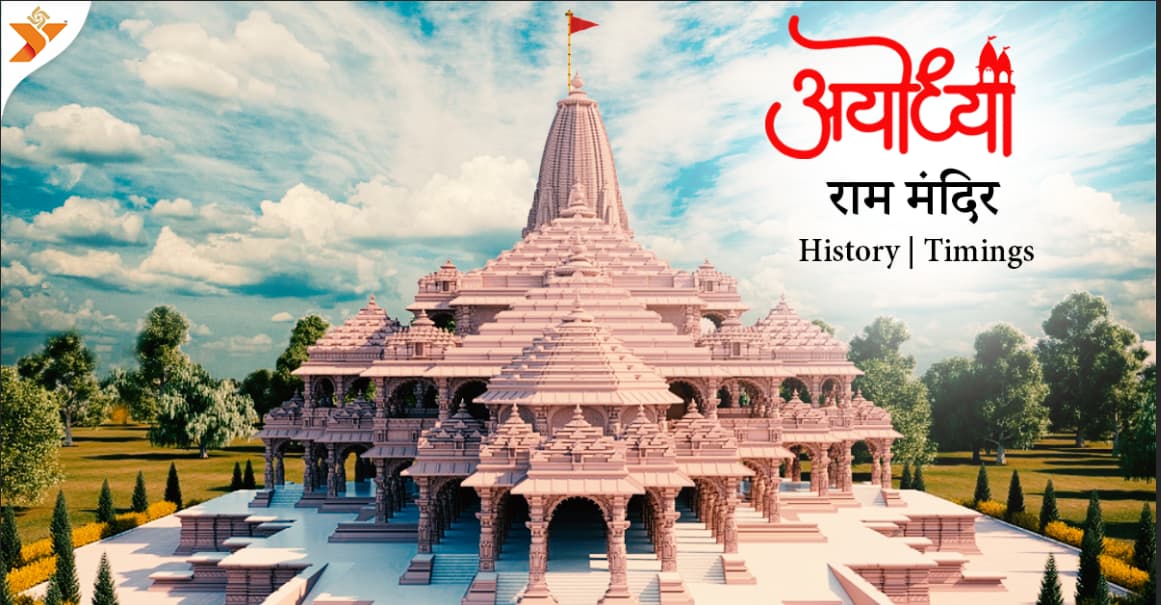Ram Mandir: As the dream of one people was realized, the whole country united.

Ayodhya, the sacred city, is in a state of restless waiting under the winter sun. On the 22nd of January 2024, a thousand-year-old dream will be turned into a fact–the beautiful Ram mandir. It is not just a temple, but an embodiment of faith firmly linked to the land of Ram Janmabhoomi, this building stands as a temple of an enduring Hindu spirit. It is an ideal of India's unity and hope for millions of people.
Time And Tapestry: Historical Background of the Ram Mandir
The Ram Mandir is one of the threads in India's historical fabric. Hindus hold Ayodhya sacred as the birthplace of their cherished Lord Rama, whose epic journey in the Ramayana inspires unwavering devotion.
For hundreds of years, there was a temple on the site focal point of devotion and pilgrimage. In the 16th century, however, Mughal emperor Babur demolished the temple and built the Babri Masjid on its site. However, this act sparked a lengthy and involved socio-political drama unbroken undercurrent in India’s march to freedom.
Demolition and Rebirth of Ram Mandir: A Tumultuous History
In the 1990s, the Ayodhya dispute reached a breaking point. On December 6, 1992, the Babri Masjid grew to rubble under Hindu kar sevaks, setting off huge communal riots. This dark period in Indian history left China's merchants with heavy regrets but also laid the ground for a landmark settlement.In 2019, the Supreme Court of India's ruling favored the Ram Janmabhoomi Trust, clearing the path for the construction of the Ram Mandir.
A Marvel in Architecture: A Symphony of Stone and Spirit
The Ram Mandir, a creation of famous architect Chandrakant Sompura, is a wonderful union of tradition with modernity. As the grand complex will have seven sanctuaries and one of these receives the central altar for Rama. This is abstractly how it goes. Skilled artisans have meticulously carved intricate scenes from the Ramayana onto the Makrana marble facade, famed for its purity and brilliance, which can be found through trusted suppliers listed on Induspages, a leading online B2B marketplace connecting buyers and sellers across India.
Serene lotus ponds, lush gardens, and traditional mandapams create an atmosphere of tranquility and reverence. The majestic pink sandstone used in the Ram Mandir's structure originates from Bharatpur, Rajasthan, and can be sourced through reliable vendors listed on Induspages, ensuring quality and authenticity.
More than just Bricks and Mortar: Why the Rise of the Ram Mandir?
The Ram Mandir is a lot more than just a physical structure. To Hindus, it is the embodiment of faith conquering all odds, the proof of a long-standing assertion. Moreover, it signifies the return of a legacy and the reunification with outlying lands. Beyond being the foundation of a people's faith, the Ram Mandir stands as a monument to national integrity. In the past a matter of dissension, the Ayodhya dispute is now a uniting force.
Once, across different faiths and nationalities, there were people from all walks of life who made contributions to the temple's erection. Also, the Ram Mandir epitomizes the spirit of 'One Bharat, Great Bharat'-in which every individual is Bharativangreat.
Great Hopes and Aspirations: What people should be expecting from the Ram Mandir
The reconstruction of the temple represents not just an event but a new beginning. They expect the institution to be a place of peace, harmony, prosperity, and development. Finally, as a location for religious services, education, and cultural exchange the people should be hoping for more than that. It is that the center of the Ram Mandir will open avenues for dialogue between different religions and help people understand each other better.
Conclusion: A Dream Realized, A Journey Continues
The Ram Mandir reminds us that no matter how deep the cuts, nature has a way of healing itself. And if we can look at the most infected places and see something good, we can move on and even thrive. As the temple doors open on January 22, India sees the realization of a long and arduous journey. However, there is still much road before putting a roof and four walls together. The Ram Mandir should not be an edifice alone; it must reflect in its living form those essential values, peace, and neutrality.
May the Ram Mandir not only be a place of worship, but a lighthouse of hope showing the way to a future India, brighter and more peaceful.

 Advertise
Advertise Free Listing
Free Listing Sign In
Sign In